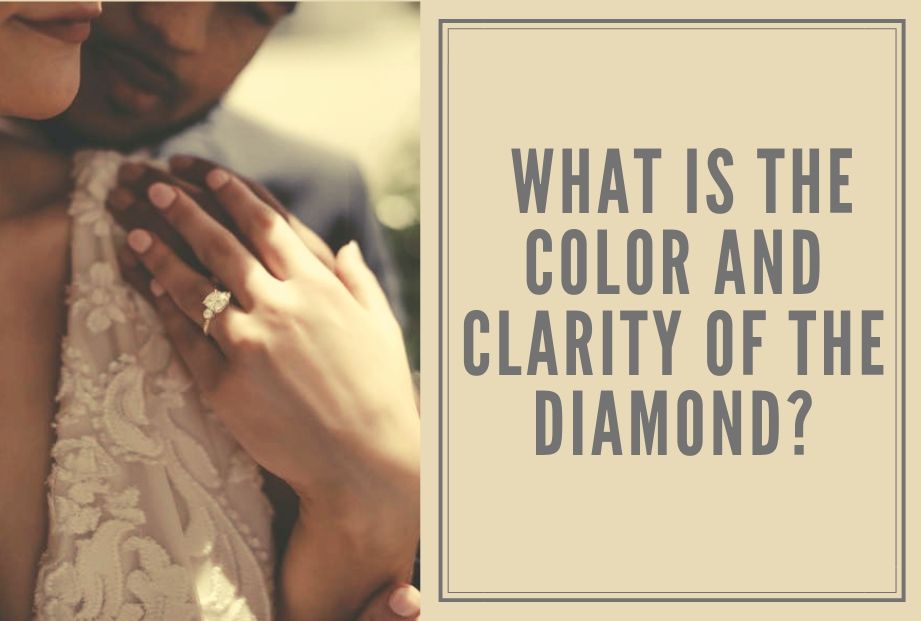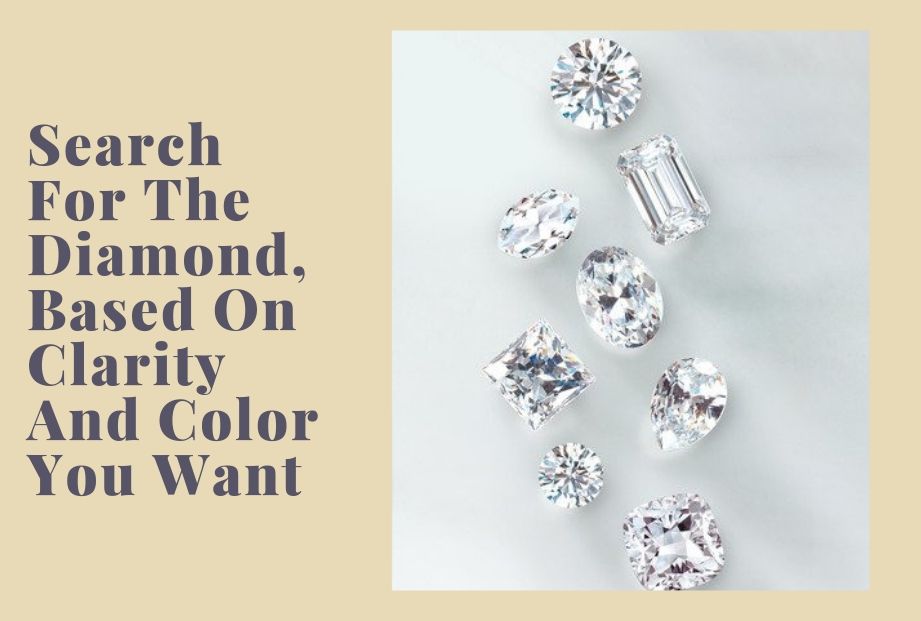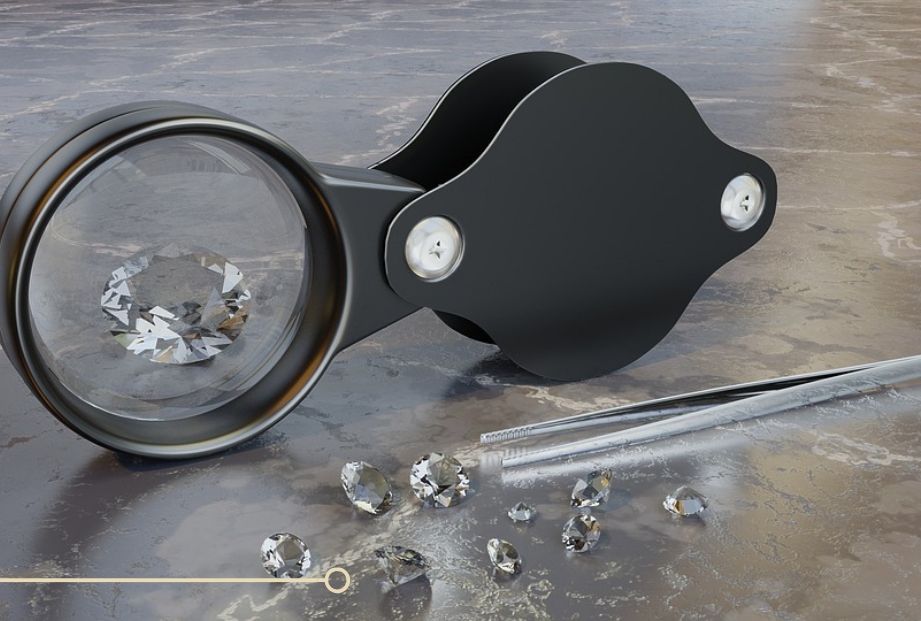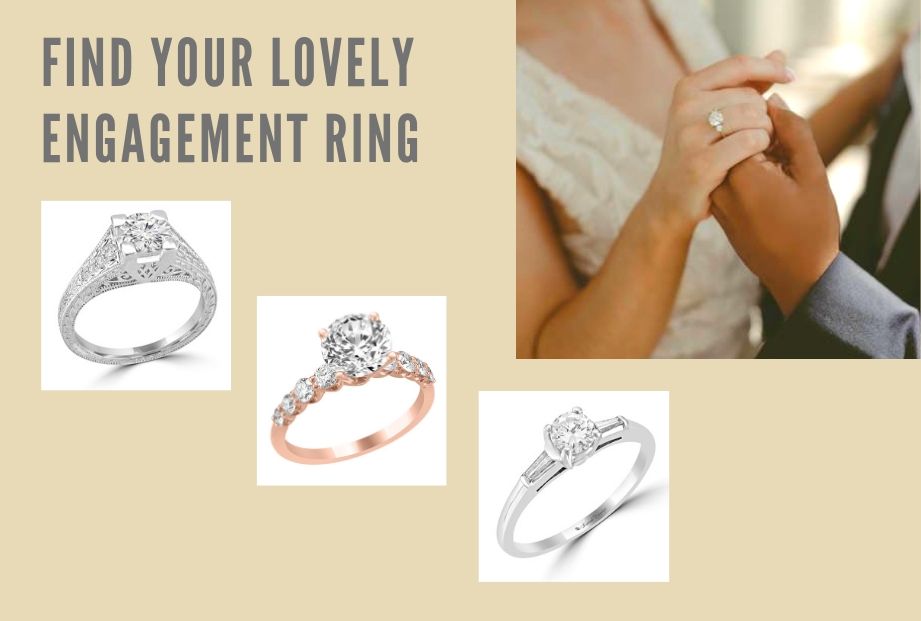The Color And The Clarity Of The Diamond
Posted by Koorosh Daneshgar on Jun 14th 2019
Search for your diamond based on the clarity and the color you want
Picking out the perfect engagement ring can be a daunting task. One think to always keep in mind so you don’t get overwhelmed is the Four C’s of a diamond. The four C’s are Cut, Color, Clarity, Carat. If you can remember a few key facts about each of these C’s you will be able to tackle the task of finding that perfect diamond. Most people know what carats are and we have discussed diamond cuts on the blog before. Today we will focus on the last 2 C’s that we haven’t really touched on.
What Is The Color And Clarity Of The Diamond?
Diamonds have different colors. It starts from colorless to light yellow. There is no best color. As a jewelry designer, I recommend you to choose the color of the diamond based on your partner’s taste. Finding out the differences between colors is easy, you just need to put diamonds side by side under the natural light. Another thing you need to know about the diamonds is clarity. Clarity is about how much inclusion is in a diamond stone. Moreover, Inclusions can affect the sparkle of a diamond. Diamond clarity defined by: FL, VVS1, VVS2, VS1, VS2, SI1, SI2, I1, I2, I3.
Diamond Color
Not all Diamonds are the same color. A diamond can range from colorless to a light yellow before going into the Fancy Colors that more rare. Technically, there is no “best color”, it all depends on personal taste of the individual. As a jewelry designer, I recommend you choose your diamond based on your partner’s taste. An easy way to learn to see the difference in diamond colors is to put them side by side under natural light. Next knowing what the grading scale for diamonds helps in your search. Gemologist grade diamonds using the English alphabet starting with the letter D and going all the way to Z. D-F graded stones are colorless in range. From my experience, most of my clients can recognize the color difference in stones that are F colored and G colored. That’s where the untrained eye begins to see colorless becoming tinted. If you are looking for a more colorless stone but are trying to stay within a budget the F/G color range is a great place to start. My years in the business has taught me that most customers are more attracted to colorless stones, but that isn’t the rule. If your significant other prefers a diamond with a more yellow tint, go with that and get what will make them beam with excitement on the day of the proposal.
Why Does The Color Grade Start At D?
I get asked all the time why gemologist don’t just start with the letter A in the color grading, and I’m always grateful for these questions. I love the opportunity to talk about my business and my love for fine jewelry. During the late 19th century there was no one grading scale. Some people used A, B, C, some chose the numbers I, II, III, IV, and then some even chose to use A, AA, AAA. Buying a diamond was a process that was even more tedious than it is today because you never really knew exactly what you were getting and if another jeweler would grade it the same way. In the early 20th century the Gemologist Institute of America (GIA) was a small company that wanted to make buying diamonds easy and accessible to the public. They created the scale that is used now-a-days. To avoid any more confusion, they started with the letter D because no other grading used any letters past C, pretty cool isn’t it?
Diamond Clarity
Another thing you need to know about the diamonds is clarity. Clarity is defined as how much inclusion (small imperfections created by heat and pressure that occur when the diamond is being formed) is in any stone. Inclusions often affect the sparkle of a diamond. Unlike color, which can be seen with the naked eye, once you know what you’re looking at, inclusions need a special tool (called a loupe) to be seen. These tools can check for graphite, feathers, crystals and clouds, which are all different types of inclusions.
The Clarity of the diamond also has its very own grading scale for defining how many inclusions are in a given stone. The clarity grading scale isn’t as black and white as the color grading scale, but a simple explanation with ajewelerwho also shows you the different grades within the stone will help you feel comfortable when picking a diamond. Here I have broken down the grading scale in a simple read format that will help you begin to understand all the different clarity grades.
FL: flawless and IF: internally flawless.
This is by far what most customers ask for. A stone of this grading will have no seen inclusions in it, even with using a loupe. These stones will carry a larger price tag, so be prepared for that when you ask to view them.
VVS1, VVS2: very very slightly included.
The inclusions in stones with this grading will be very faint but noticeable with a 10* loupe. Sometimes the inclusions are so miniscule that it takes a few minutes for even a reputable jeweler to pin point.
VS1, VS2: very slightly included.
The inclusions in these stones will be more easily noticed by a skilled jeweler with a 10* loupe. These stones are great choices for couples trying to stay within a budget because these inclusions exist, but they are still might not be so noticeable that they could effect the sparkle.
SI1, SI2: slightly included.
These stones inclusion are easily seen with a 10* loupe.
I1, I2, I3: included.
I always advise my clients to avoid these grades stone. Because of a lot of inclusions, the sparkle of the diamond becomes less dramatic.
Why We Have VVS1 and VVS2 or VS1 and VS2?
Just when you thought learning all the different letter variations was hard, now we’re adding numbers to the grading equation. If you see the number one at the end of the of the clarity grading it means that the inclusions are in the side of the diamond, making them not as visible. Having the number 2 after the grading means that the inclusions are in the center of the stone, which means that they are probably more noticeable and will effect the sparkle of the stone more. Although it can seem tedious, it is important to know and understand what you are buying. Putting that ring on your significant others finger means so much more, if you hand picked the stone.
Which One Is More Important? Size? Cut? Color? Or Clarity?
Like I have stated before, it is very important to do your research before beginning the journey of buying the perfect engagement ring. The order I would put the 4c’s into as far as most to least importance is: carat, cut, color, clarity. After my 30 years in the jewelry business, I can honestly say that it totally depends on the couple. I’ve had a couple walk in that wanted a picture perfect diamond, but the size didn’t matter. It could have been .5cts or 3cts as long as the stats were perfect. I’ve had other customers that want as big of a diamond they can budget for, so they take a little less on the cut, color, and clarity. You have to do what’s best for you and your significant other. Everyone will have their own idea of the order that the 4c’s should go and technically no one is wrong. But what is the most important part of the engagement is that the ring you pick signifies a special moment and bond between you and your significant other that will be stronger than any diamond.
Why should I come to you to design my ring?
We involve you in every step of the process. At first, we will sit next to you and go over any concerns you have and any specific design elements you mind the ring to have. Once we have established exactly how you want the ring looks like, we will proceed with the design process. Once you see this design, if you want to make any change or if you have any questions or concerns we will be happy to address them for you. Our role is to help you to create the perfect ring and that means we will listen to you and make sure that your ring is indeed one of a kind.
We'll help you to design your dream engagement ring without stress and spending countless hours searching for your perfect ring. All you need to do is click on "Free Consultation" to get started.
By: Koorosh Daneshgar CEO/Design Chief
Email: Koorosh@WeddingBandscompany.com
Phone: 312-920-0726
Business Text Message Line:312-785-8333






